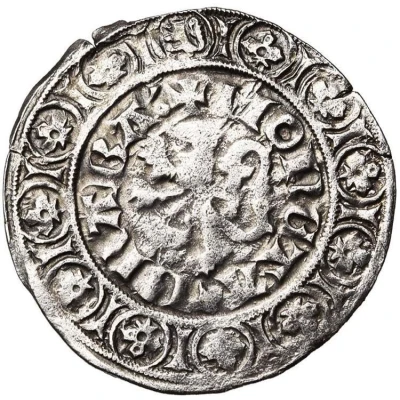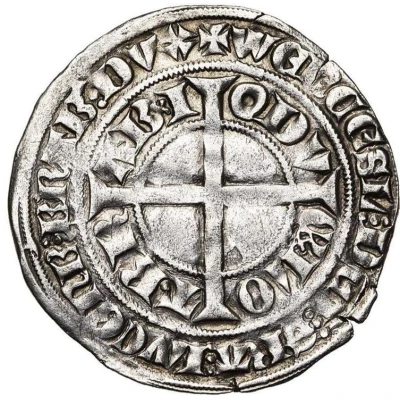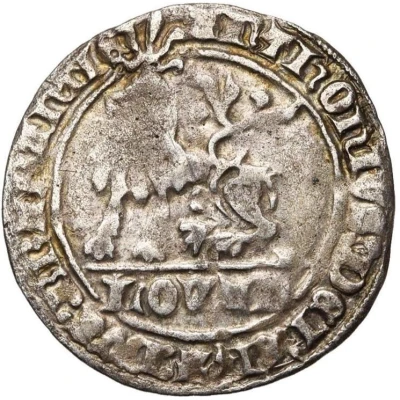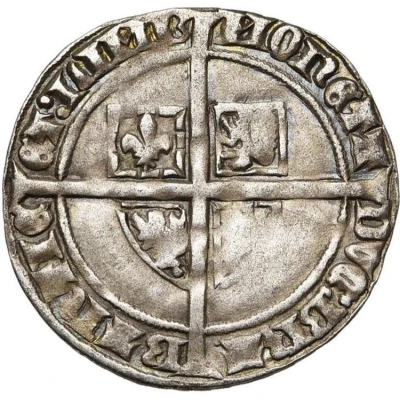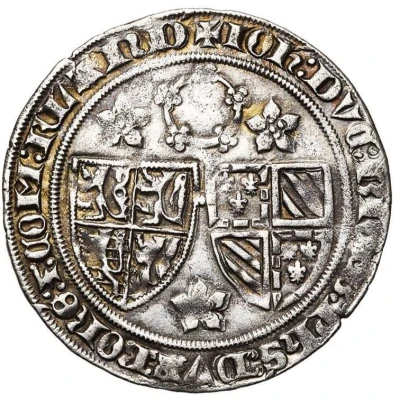
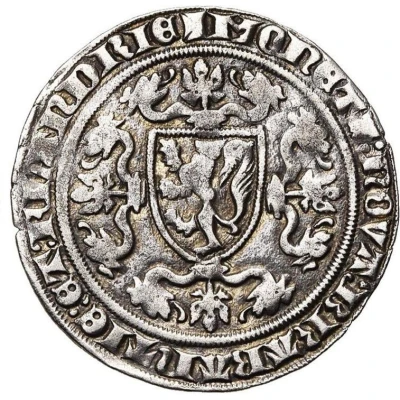

© Jean Elsen & ses Fils s.a.
Groat "Rozebeker" - Johanna ND
1384 year| Billon (.479 silver) | 2.35 g | 28 mm |
| Issuer | Duchy of Brabant (Belgian States) |
|---|---|
| Duchess | Joanna (1355-1406) |
| Type | Standard circulation coin |
| Year | 1384 |
| Value | 1 Groschen (Groot) |
| Currency | Groot (1183-1506) |
| Composition | Billon (.479 silver) |
| Weight | 2.35 g |
| Diameter | 28 mm |
| Shape | Round (irregular) |
| Technique | Hammered |
| Orientation | Coin alignment ↑↓ |
| Demonetized | Yes |
| Updated | 2024-10-04 |
| Numista | N#98152 |
|---|---|
| Rarity index | 94% |
Reverse
Shield with Brabant arms atop a floriate cross with tips in shapr of dragon's heads
Script: Latin
Lettering: + MONETA:NOVA:BRABANTIE:ET:FLANDRIE
Translation: New coinage of Brabant and Flanders
Comment
From the monetary Convention between Flanders (Philip the Bold) and Brabant (Joanna), which was definitively promulgated, July 16, 1384Loi: VI deniers silver the King.
A similar coin was issued in Flanders by Philip the Bold, differing in the order of the titles in the obverse legend. The legend of the Flanders coin begins with PhS DVX ... (see reference below)
Interesting fact
One interesting fact about the "Rozebeker" Groat coin is that it was minted during the reign of Johanna, Duchess of Brabant, who was a powerful and influential leader in the 14th century. She was known for her efforts to promote trade and commerce in the region, and the minting of this coin was likely a part of those efforts. The coin's design features a unique blend of medieval and Renaissance elements, reflecting the cultural and artistic influences of the time. Additionally, the use of billon, a silver-copper alloy, was a common practice during this period, as it was a more affordable alternative to pure silver.
